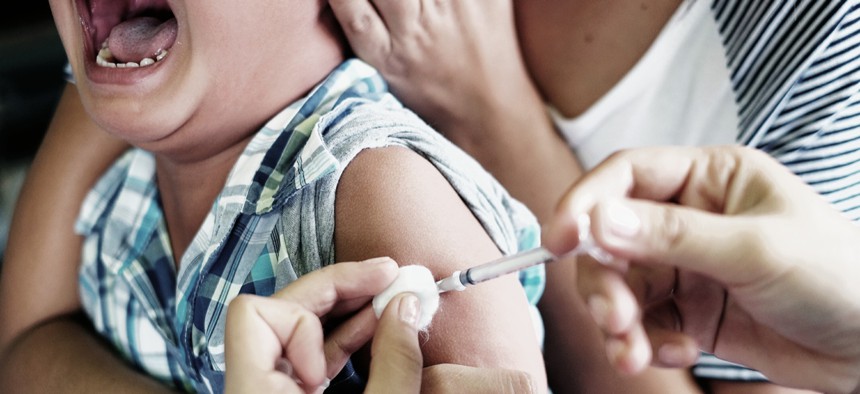
Shutterstock.com
History Does Repeat Itself: Lessons from the Polio Vaccine
Creating a safe vaccine is one thing; distributing it fairly and effectively is an altogether different challenge.
The summer has presented an opportunity to catch up on podcasts. One of my favorite historians is Harvard professor Jill Lepore, author of the award-winning These Truths: A History of the United States. Lepore recently launched a new podcast series, “The Last Archive,” in which each episode explores a story from American history. In episode 6, “Cell Strain,” she chronicles how the polio vaccine was launched in the 1950s.
I clearly remember taking the cherry-flavored oral polio vaccine while in elementary school. Jonas Salk, the scientist who developed the vaccine, was a hero in my household. I also remember newsreels showing children in iron lungs. But other than the cherry-flavored vaccine, Jonas Salk, and iron lungs, I actually knew very little about the history of the polio vaccine.
Enter Jill Lepore with “Cell Strain.” In March 1953, Salk announced the development of a polio vaccine, after which it underwent two years of clinical trials. During that time, over 440,000 children were inoculated with the vaccine and another 210,000 children received a placebo; 1.2 million children received no vaccination and served as a control group.
There is an interesting side-story to the field tests Lepore explores. For the tests, children had to have blood drawn, which then had to be tested on cells. Those cells came from Henrietta Lacks, the African-American women whose cancer cells were the source of the HeLa cell line, the most famous cell line in medical history. The cultures were tested at the Tuskegee Infantile Paralysis Center which had been founded in 1940 to treat Black children with polio and to serve as a research and training base for Black health care professionals. At its peak, 20,000 tube cultures were shipped per week and by 1955, the Tuskegee HeLa team had shipped over 600,000 cultures. Lepore speculates that this story was kept largely out of public view because various officials did not want it widely known that blood from white children was being mixed with cells that came from a Black woman.
The big day arrived on April 12, 1955, when Salk announced the efficiency of the polio vaccine and that it was ready for distribution. That evening, Dr. Salk went on the CBS News program “See It Now” with Edward R. Murrow to discuss the findings and his view that there should be some “central intelligence” to inform distribution plans for the vaccine, which he believed should be mandatory. As Lepore recounts, “The scientists had done their part to protect kids from polio, now the government needed to step up with its central intelligence on ways to get the vaccine out to the public.”
It turned out, however, that the government had no plans for how to distribute the vaccine, despite knowing for two years that it was coming. The day after the Salk announcement, April 13, Oveta Culp Hobby, the first Secretary of Health, Education and Welfare, went before Congress and disputed suggestions that the distribution should be regulated or managed by the federal government or that it should be compulsory.
Frustrated, President Dwight Eisenhower ordered Hobby to quickly develop a plan for vaccine distribution since summer was coming and the rate of infection rose with the heat. Hobby, a conservative Republican donor from Texas, was slow to respond, so Eisenhower called a cabinet meeting to discuss his desire for free federal distribution of the vaccine. But Hobby wanted states, corporations, or charities to distribute the vaccine—anybody but the federal government. As Lepore explains, she opposed “socialized medicine.”
At the cabinet meeting, Hobby proposed waiting to see how many states would provide the vaccine themselves without federal funds. Governors, however, wanted the federal government to take charge. The cabinet argued about how to pay for the vaccine for poor children whose families could not afford it. Hobby proved an implacable obstacle to planning, and even declined to decide what federal agency should take the lead in distributing the vaccine.
Grilled at hearings that summer by unhappy members of Congress, Hobby insisted the problems could not have been foreseen. Forced by Congress to take some action, she finally developed a program to allocate grants to states to provide funding for the delivery of the vaccine to poor children, but continued to make it clear that the federal government would not “take charge” or make the vaccine “compulsory.” More hearings ensued, and while some lawmakers called for Hobby’s resignation, she support from Sen. Barry Goldwater, who shared her fear that a government vaccination program would be “socialized medicine by the back door, not the front door.”
Despite the wrangling over polio vaccine distribution, four million children were vaccinated by July 1955 and a national health crisis was avoided—without much help from the federal government. Later in July, Hobby resigned from the government.
In this summer of 2020, a trip back to the summer of 1955 is indeed a worthwhile journey. It’s an opportune time to reflect on lessons learned from fighting previous public health crises.
Mark A. Abramson is president of Leadership Inc. His most recent book is Government for the Future: Reflection and Vision for Tomorrow’s Leaders (with Daniel J. Chenok and John M. Kamensky). His email address is mark.abramson@comcast.net.






